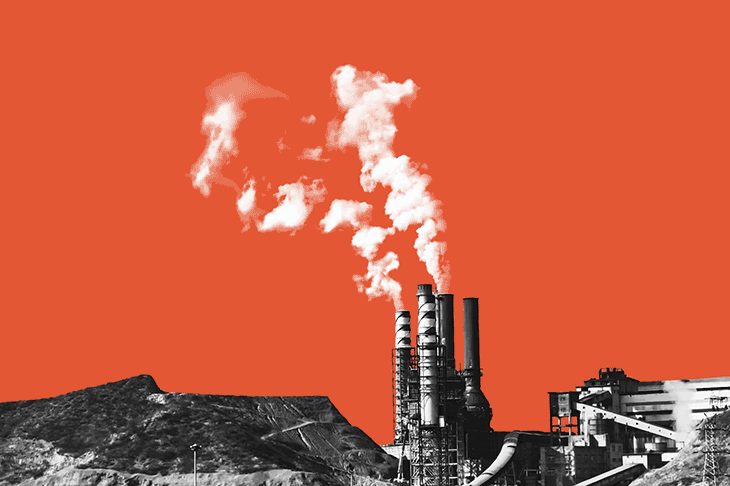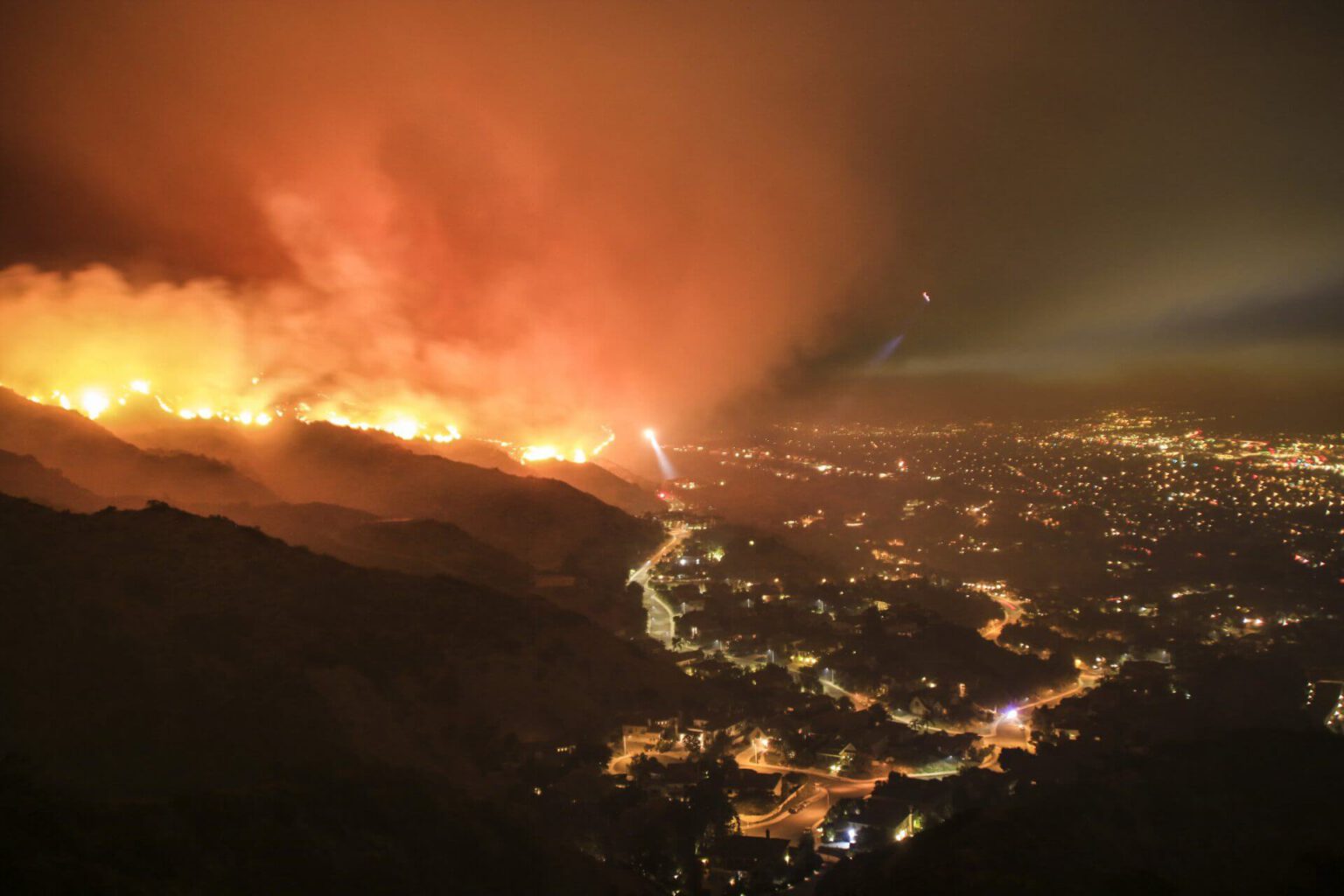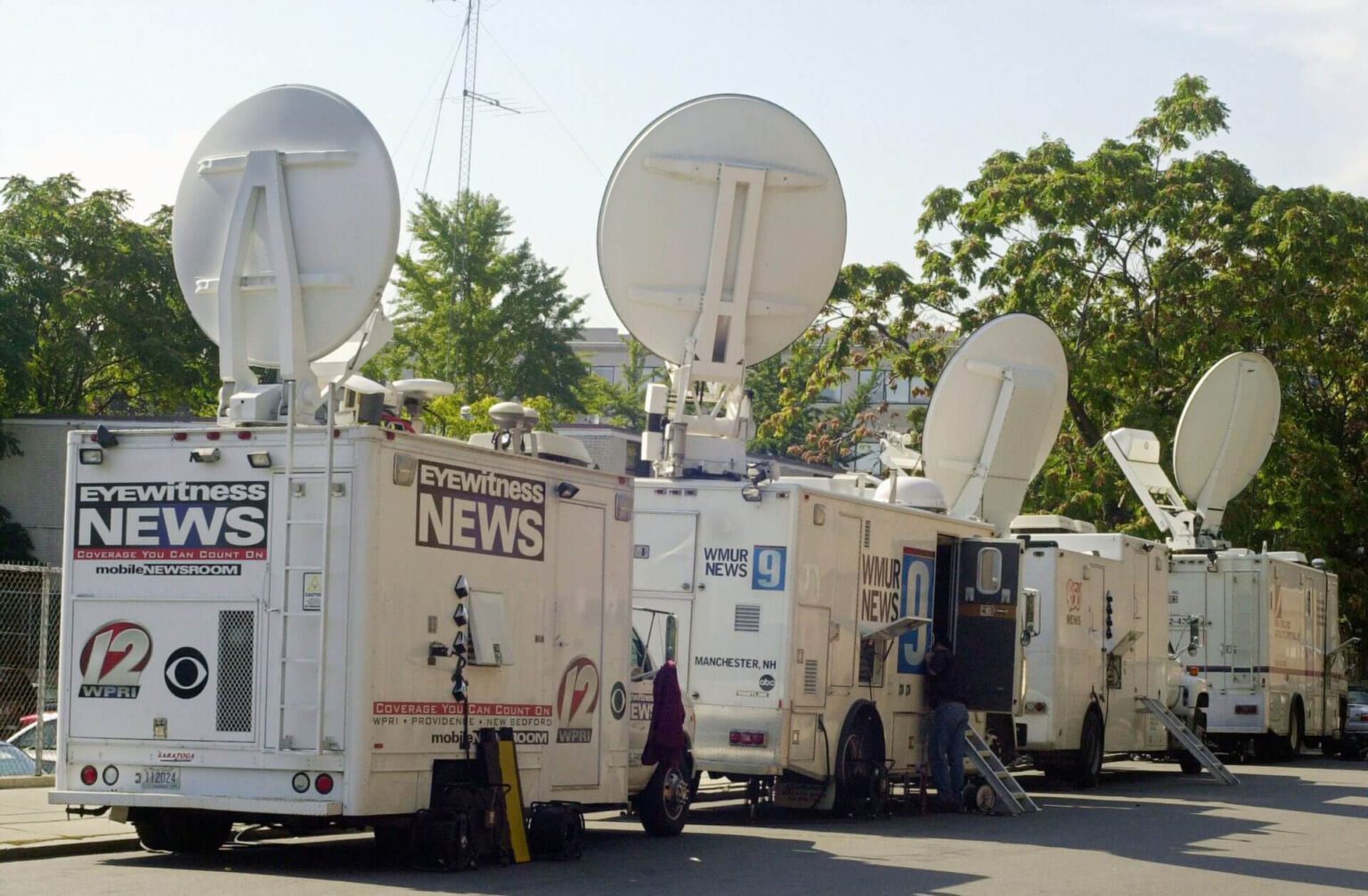This resource is available in Spanish
“It is my responsibility to empower my audience to know more about climate change, in a way that people not only understand it but accept it from a trustworthy source.” – John Morales, ClimaData founder & longtime meteorologist in Miami
Human-caused climate change is making extreme weather and its impacts more frequent and more intense. Examples include more excessive heat, longer and more frequent droughts, more rapidly strengthening hurricanes, and heavier downpours. When reporting on extreme weather, it’s essential to explain the climate connection so audiences understand how the warming planet is changing their lives.
Increasingly, scientists are able to identify the size of climate change’s fingerprints on a given extreme weather event through attribution science. For example, 2022’s deadly heatwave in India was made 100 times more likely due to climate change, according to scientists.
Even in the absence of explicit attribution data, it’s accurate to say that climate change is making extreme weather more common and more severe. Here’s some sample language for making the connection:
- Scientists agree that climate change drives extreme weather like today’s high temperatures.
- Heatwaves like this one are now more common and more intense as a result of human-caused climate change/in a warming world.
- Human-caused climate change isn’t solely to blame for extreme weather, but it supercharges normal weather patterns, like steroids.
- After scientists study and publish the direct role of climate change: “Human-caused climate change made these conditions more than [number] times as likely. In other words, the conditions would be nearly impossible in a world without carbon pollution.” – Climate Central Shift Index
Examples in the News
Check out these examples of journalists nailing the climate connection, simply and effectively, plus language journalists can use when reporting, via the non-profit news organization Climate Central, which analyzes and reports on climate science.
Heatwaves
In India and Pakistan: “‘There is no doubt that climate change is a huge game changer when it comes to extreme heat,’ said [Dr. Friederike Otto, of Imperial College London and World Weather Attribution.] “Every heatwave in the world is now made stronger and more likely to happen because of human-caused climate change.” – Damian Carrington, environment editor at the Guardian
In the Western US: “Fueled by climate change, the first major heat wave of the summer has seized the western United States, toppling records and threatening lives.” – Sarah Kaplan, climate reporter at The Washington Post
Language for journalists: “More frequent and intense extreme heat — the deadliest natural hazard in the US — is a direct result of a warming planet.” – Climate Central
Drought
In the Southwest US: “It’s no secret: Our planet is warming. That includes Phoenix and Arizona, coming off the hottest summer on record last year. … Those changes [are] already impacting our state’s water supply. The Bureau of Reclamation will declare water shortages along the Colorado River this weekend.” – Jorge Torres, meteorologist & climate reporter at KNXV-TV
In East Africa: “A group of scientists have concluded that a devastating drought in the Horn of Africa, where tens of millions of people and animals have been pushed into starvation, would not have happened without the influence of human-caused climate change… While climate change has had only a minimal effect on rainfall, the researchers said, increased heat has forced more evaporation from plants and soils, drying them out. This drying effect would not have happened without climate change, the scientists said.” – Georgina Gustin, reporter at Inside Climate News
Language for journalists: “Rising global temperatures are altering the water cycle and increasing the risk of drought in parts of the US.” – Climate Central
Rainfall and Flooding
On heavy rain: “How does climate change affect heavy rain? It all starts with the release of greenhouse gasses like carbon dioxide and methane. As humans keep burning fossil fuels, the atmosphere gets hotter. That hot air holds more water vapor, and so when it rains, it rains harder.” – Rebecca Hersher, climate desk correspondent at NPR
Flooding in Pakistan: “A third of the country underwater. More than 1,000 people killed. … Experts and local officials have drawn a direct line to human-made climate change, saying it illustrates how countries with the lowest contributions to the global crisis are becoming increasingly vulnerable to its effects.” – Mushtaq Yusufzai, Rhoda Kwan, and Evan Bush for NBC News
Language for journalists: “Climate change is bringing heavier rainfall extremes and increased, inequitable flood risk to many parts of the US.” – Climate Central
Sea Level Rise
Explained: “As humans add more heat-trapping pollution to the atmosphere and the globe warms, over 90% of that extra heat actually ends up in the oceans,” said Kelly Van Baalen, project manager of the sea level rise project at Climate Central. “This causes sea water to expand and that along with melting glaciers and ice sheets is causing the sea level to rise. And those rising sea levels are pushing more coastal flooding into America’s communities.” – Geoff Cornish at AccuWeather
Impacts on infrastructure: “These pipes — and other below-ground infrastructure — which already periodically flood during high tides could become more routinely inundated as the bay continues to rise because of human-caused climate change.” – Ezra David Romero at KQED
Language for journalists: “The frequency of coastal floods has risen sharply in recent decades. Rising sea levels due to human-caused warming will continue to increase both tidal flooding and flooding from extreme weather events in the years ahead.” – Climate Central
Snow and Ice
On warmer winters: “Scientists are reluctant to blame any single weather event on climate change but Heidi Roop, Ph.D, a climatologist at the University of Minnesota, says the larger patterns are what she looks at and all of them tell us winter weather is getting warmer and less reliable in the era of climate change.” – David Schechter, Haley Rush, Chance Horner at CBS News
On winter storms: “While the connection between climate change and cold weather patterns isn’t as clearly established as its relationship to warming, experts say it does affect how severe winter storms are and how long they last. And cold weather, even when extreme, does not negate that Earth is warming.” – Stephanie Ebbs at ABC News
Language for journalists: “The timing, location, and amount of snowfall is shifting across the US. The frozen parts of Earth’s surface — including ice sheets, glaciers, sea ice, permafrost, and snow cover — have shrunk over recent decades due to human-caused warming.” – Climate Central
Hurricanes
On hurricane season 2023: “A big contributor to a more active hurricane season is hotter ocean temperatures and rising sea levels, according to Xubin Zeng, a researcher at the University of Arizona who leads the forecasts each year. ‘With global warming there will be more water vapor over oceans, and water vapor is a fuel for hurricanes,’ said Zeng. ‘That means on average we expect to see more hurricane activity, not necessarily in terms of the [total] number but in terms of the major hurricanes.’” – Siri Chilukuri, environmental justice fellow at Grist
Hurricane Ian: “Climate change is likely also contributing to hurricanes moving more slowly, increasing the duration of winds, storm surge and rainfall that leads to flooding near the coast as well as inland. ‘This has recently resulted in tropical storms and hurricanes having major water impacts, even without being a major hurricane — Category 3 or stronger — on the wind scale,’ [Dr. Richard] Knabb [director of NOAA’s National Hurricane Center] said.” – Gina Martinez for CBS News
Language for journalists: “Warming oceans fuel stronger tropical cyclones [which include hurricanes and tropical storms] that bring more heavy rainfall and higher storm surge when they make landfall.” – Climate Central
Wildfires
On 2023 Canadian wildfires: “Human-caused climate change has exacerbated the hot and dry conditions that allow wildfires to ignite and grow. Scientists recently reported that millions of acres scorched by wildfires in the Western US and Canada — an area roughly the size of South Carolina — could be traced back to carbon pollution from the world’s largest fossil fuel and cement companies…” – Derek Van Dam and Rachel Ramirez for CNN
Headline: “Wildfires and smoke waves fueled by climate change likely to become more frequent.” – Liz McLaughlin at WRAL
Language for journalists: “More frequent hot, dry, windy conditions contribute to more wildfires that put people and ecosystems at risk… human-caused climate change, poor land management practices, and sprawling development have increased both the availability of fuel and the frequency of weather conditions that spark and spread dangerous fires.” – Climate Central
Reporting Tools
Check out these reporting tools for help making the climate connection to extreme weather.
Climate Central’s ‘Climate Shift Index,’ a tool to help journalists identify the impact climate change is having on local temperatures worldwide.
World Weather Attribution provides assessments in real-time as extreme weather events unfold across the globe. Journalists can cite this data to help audiences understand the role climate change is playing in the likelihood and severity of the event.
CCNow’s ‘Extreme Weather’ reporting guide breaks down how climate change is influencing specific weather events with links to sample stories and expert sources.
SciLine’s extreme weather guides are designed for US journalists with ready-to-use facts (and pitfalls to avoid) for explaining the climate connection. With a large rolodex of top scientists, SciLine also connects journalists with climate experts to offer context on extreme weather.
You’ve got this! Remember, an extreme weather story that doesn’t mention climate change is incomplete and potentially even inaccurate. The good news? Making the connection is as easy as it is necessary.



